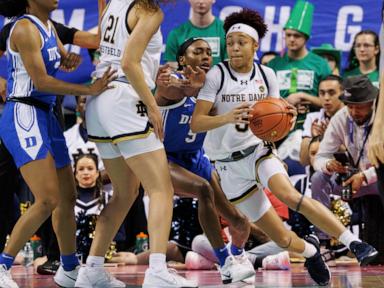For years and years, prominent women’s college basketball coaches pleaded with the NCAA, their bosses, and, really, anyone who would listen. South Carolina coach Dawn Staley and many of her peers asked for units, believing that women’s teams deserved to be rewarded financially for advancing through the NCAA Tournament — just like the men’s teams were.
In January, those efforts were rewarded. For the first time in NCAA Tournament history and at a pivotal point in college athletics, women’s basketball teams will receive payouts proportionate to their success on court.
“Units” is a shorthand way to describe the payouts associated with participating in and advancing through March Madness. For example, South Carolina’s run to the Final Four this year will earn the Southeastern Conference five units (and counting) — one for making the field and one for each of their four victories so far.
Each women’s basketball unit is worth approximately $113,600 this year, an amount that will then be paid out over the next three years. The payouts aren’t nearly as big as the ones the men get from their massive March Madness media rights deal. But they are a start — and that makes them significant.
“It’s the representation that the women's game has value, and bringing value in any association or organization or company gives you a seat at the decision-making table,” said longtime Atlantic 10 commissioner Bernadette McGlade, one of the most respected voices in women’s college basketball. “In the past, the excuse for why the women didn't have any unit distribution was a byproduct of how the finances within the NCAA were actually structured. … The women’s championship was bundled with 80 other championships and international rights, so the rationale was, well, we can't really put a specific value on the women's championship.”
But now the NCAA can do just that, in the wake of its new eight-year, $920-million deal with ESPN, which took effect last fall. The NCAA and ESPN kept the women’s basketball tournament as part of a bundle with other non-men’s basketball/football championships but specifically determined that the Division I women’s basketball tournament is worth $65 million annually.
“It eliminates the argument that there's no revenue generated in the sport of women's basketball, and that has been an Achilles heel for the women's championship and women's basketball,” McGlade said. “That argument can no longer be used.”
Added Big East commissioner Val Ackerman: “There's a symbolism that I don’t think can be lost on anybody — the fact that women's basketball is being treated more seriously.”
After announcing the new media rights deal with ESPN last January, NCAA president Charlie Baker made the formation of a unit program a top priority. It had been one of the recommendations laid out in the 2021 Kaplan gender equity report, which was commissioned after the disastrous 2021 women’s NCAA Tournament (which brought attention to weight room, food, branding and other discrepancies between the men’s and women’s tournaments). The men’s units system has been in place since 1991 and is tied to the NCAA’s very lucrative deal with CBS and Turner that pays the NCAA more than $1 billion per year.
So, men’s teams will still earn significantly more per win in March Madness — approximately $2.1 million per unit, paid out to their conference over six years. That means the total pool for the men’s units program is around $277 million.
The pool for the women’s units is much smaller. It begins at $15 million for the 2025-26 fiscal year and increases by $5 million each of the next two years. It will stay at $25 million from 2027-28 onward. At that point, with a 68-team bracket, each unit ...





